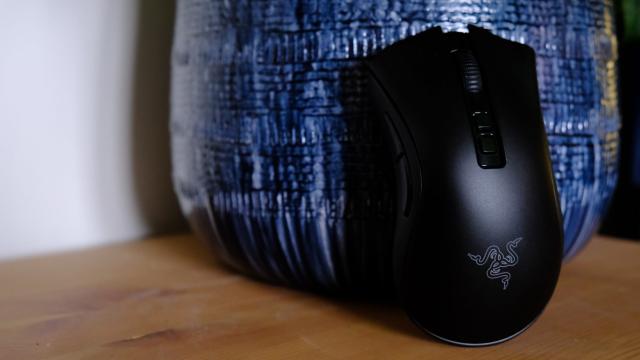The Razer Deathadder is one of the most seminal gaming mice. For many PC gamers, it was their first proper gaming mouse — and it became one of Razer’s most important products.
The Deathadder really solidified Razer as a gaming company that understood the industry and their target market. It wasn’t their first mouse — that was the Boomslang, which was first released in 1999 under the Kärna name before it was rebranded a few years later with the Razer logo. And while it had its fans, it was also an unusual shape for its time — and the in-built Agilent sensors also took some getting used to.
Similarly, Razer’s Diamondback, Copperhead and Krait mice all found fans in corners of the internet. But it was the Deathadder in 2006 that became Razer’s first massive hit, a right-handed ergonomic mouse built with the similar stylings of Microsoft’s hugely popular Intellimouse 3.0 optical offering. The Deathadder struck a chord because it offered higher quality materials, had flash RGB lighting, and a tried-and-tested shape — and you could actually buy it, a key factor since Microsoft had taken their favoured gaming mice out of production by then.
The Deathadder’s received multiple iterations over the years, getting new sensors, new lighting, a left-handed version and more recently, a mini-sized Deathadder. But the only thing missing was something that Razer had brought to just about everything else: wireless.
The wireless sensor is the same in-house Hyperspeed one that Razer deployed in the Viper Ultimate, Razer’s crack at an ultralight wireless gaming mouse. That’s still one of the best mice on the market hands down, with the only real caveat being that it’s on the smaller side. So if you prefer heavier, bigger mice that fit in your hand?
That’s where the Deathadder comes in.

The Deathadder V2 Pro — that’s its official name — has a maximum of 70 hours of battery life, provided all the RGB lighting is disabled. It’s programmable and customisable through the same Razer Synapse software suite, which gracefully will still let you login as a guest and save settings to the mouse profile so you can happily delete the software.
Razer uses their own optical switches for faster actuation time — although in my experience, you don’t really end up with faster reaction times. The main difference you’ll notice is the sound and feel: Razer’s optical switches have a softer, duller sound than the higher pitched “click” you’d get from mice using Omron or Huano switches.
The left and right clicks have a good snap even without that mechanical clicky sound. Razer’s mousewheels are well balanced, too. There’s a nice degree of rigidity between the mousewheel’s steps, but the wheel itself is still light and doesn’t feel stiff at all. That’s a huge help in those rare games where you want to use mouse 3. Also, the quieter clicks mean the wireless Deathadder should fit into any office environment without annoying your managers or co-workers.
Razer’s learnt from past experience, too. The mouse feet on the wireless Deathadder have rounded edges and are slightly thicker and wider, which is always good for longevity. The sensor’s the same as Razer’s most recent wireless mice, so no issues when it comes to its performance in competitive games, its lift-off distance or delays from wireless lag. One thing I did notice was that it was slightly faster when waking up from hibernation than my Viper Ultimate — although I don’t know if that improvement was made at a software/firmware level. That was never a dealbreaker with my Viper Ultimate, because it only occurs when you haven’t used the mouse in a while (and you can always customise the time before the mouse turns off). Still, any improvement is nice to see.

The materials for Razer’s mice have gotten really good, and the wireless Deathadder naturally inherits that expertise. There’s some rubber coating on the bottom half of the sides for grip, while the main body of the mouse is matte plastic with a very fine texture. It feels good in the hand and should have no qualms during the hotter months (as my Viper Ultimate has done, which has very similar materials, although not as much texturing on the matte plastic).
The only real problem with the Deathadder V2 Pro is, naturally, the price. It’s selling for $224.95 through the Razer store and most Australian retailers at the time of writing. Thankfully, there are some major sale periods just around the corner. And even though there are definitely cheaper offerings — particularly if you’re happy to try less flashier brands — you can’t really replace the feeling of having the right mouse for your hand. The Deathadder V2 Pro doesn’t ship with the $89.95 remote charging dock like the Viper Ultimate can, although I think most people would be happy to just charge via the cable when they need to.
More than 10 million Deathadder mice have been sold over the years, so it’s not hard to see why Razer hasn’t fundamentally changed the design over the years. Now, there’s a wireless version. And of course it’s naturally excellent: it has the same great shape, design and internals that have been battle tested on legions of mice previously. And that’s exactly all anyone who’s tried and loved a Deathadder would want: the same as before, but just a little bit better.

Leave a Reply